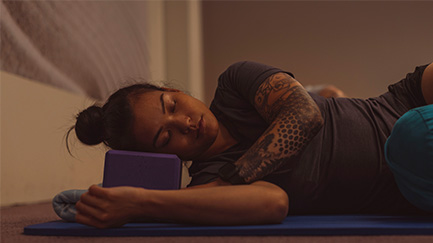13 May 2021
It’s very common to feel frustrated about pain. You’ve tried it all - taken the advice of what seems like every allied health professional, self-diagnosed via Google search and purchased strange teas, oils, supplements and back braces from Facebook – and nothing has worked.
The most obvious thing to do is to stop doing the activities that cause the pain, right?
There are two important points to remember:
1. Pain is an alarm system of the body.
2. You know your body better than anyone else.
Our pain alarm
When we accidentally touch a hot pan, we move our hand away quickly to avoid further injury. Pain is our call to make quick action. It encourages us to move or change. When it comes to long term pain, however, we tend to do the opposite. Long term pain can cause us to freeze, even accept the pain by treating it with medication and limit movement to that area. Rest and medication can be a sensible option, however in the long term, immobility or misuse of area will restrict your function and potentially increase pain and make the problem worse.
How do we listen to our body?
It’s important to recognise that you will always feel better for movement. The human body is designed to be warm and move. It will never function well long term if you remain still, rigid, and sedentary. Movement can be anything from five minutes of stretching and a walk around the block, to an hour-long yoga class or weights at the gym. Start identifying what movement feels good for you. Does walking the dog and a couple of yoga classes a week make you feel good? That’s great! Just because your friend told you need to do weights 3 times a week, or a magazine said that Pilates is better than yoga, doesn’t mean they are right for you. Including movement into your lifestyle is all about what feels good for you – mentally and physically.
If you are experiencing pain in a specific area, for example in your lower back, listen to that. What does it need? It feels great when you stretch your back, spend some time in the pool and do core exercises. Wonderful! That’s what you need to do to keep your back happy. For muscular and joint pain, rest will not help your pain long term. Improving your functional strength and mobility will. Support from an Exercise Physiologist (EP) can assist, especially if you really don’t know what helps and the pain has been present for a long time. An EP can teach you ways to listen to your body and help formulate a self-management plan to assist and improve your pain.
Pain is a call to action. What will your action be?
Written by Lauren Kelly, Exercise Physiologist





